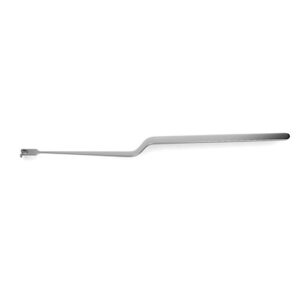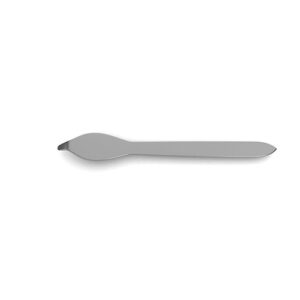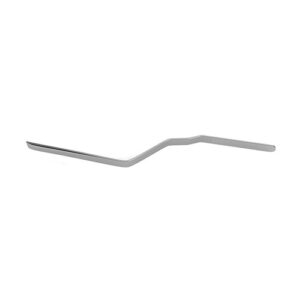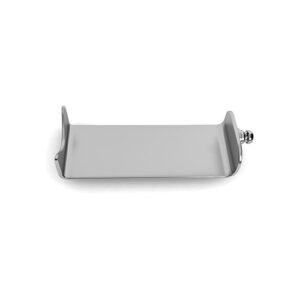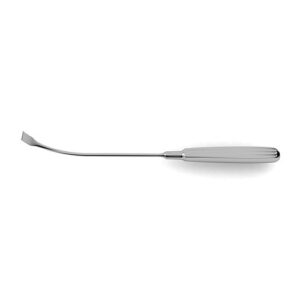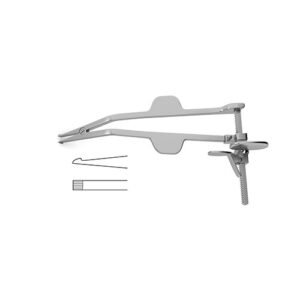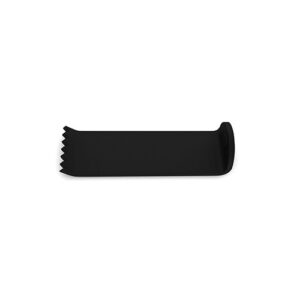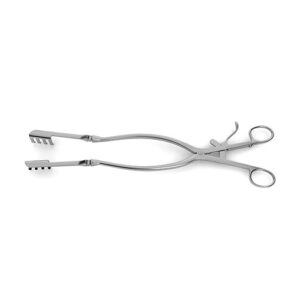| Name | Hoen Nerve Hook |
| Lead Time | Lead time advised within 48 hours of order placement. |
| Competitor | ;285236;285-236;574999;57-4999;5749-99;VM846126;VM84-6126;381085;38-1085;285235;285-235;575000;57-5000;5750-00;5749-99_5750-00; |
| Specialty | Neuro, Ortho & Spine-Hooks |
| Material Finish | Stainless Steel |
| Grade | Premium Operating Room |
| Units of Measurement | Each |
| Manufacturer | seemab surgical |
| Sterility | Non-Sterile |
| Usage | Reusable |
Hoen Nerve Hook
blunt, 9″ (23.0cm)Hoen Nerve Hook can be used in a variety of neurosurgical procedures and is crafted to retract nerves. It features a slim handle from which extends a narrowing neck that ends with a 90 degree bend that forms the hooking head. Additionally this hook is blunt, ensuring that the retraction of nerves is done atraumatically without causing any injury to the nerves. This instrument is available in two profiles: straight or angled making it well suited for a variety of surgical scenarios and surgeon preferences.
SKU:
VI-01-1049
Category: Hooks & Retractors
Description
Shipping & Delivery
Related products
Caspar Nerve Root Retractor
9-1/2" (24.0 cm)?Caspar Nerve Root Retractor is an instrument specially made for use in neurosurgical procedures. More specifically this is used in nerve root retraction in procedures such as lumbar discectomy. The retractor blade comes in a variety of widths including: 6.0 mm, 8.0 mm and 10.0 mm making it a highly versatile retractor that can apply a varied amount of pressure depending on the circumstance.
Cervical Retractor Longitudinal Blade
stainless steel, ball snap closure, blunt?Cervical Retractor Longitudinal Blade is an added component to be used alongside the cervical retractor for longitudinal retraction. All five blades are made from stainless steel and a ball snap closure making them a tight fit. Each blade also features a blunt edge to prevent trauma and tearing during retraction. They are available in variety of sizes and curvature making it possible to find a suitable blade for soft tissue retraction in a number of neurosurgical scenarios and approaches to the spinal cord.
Campbell Nerve Retractor
10.5 mm wide blade, 8-7/8" (22.5 cm)?Campbell Nerve Retractor is specially designed for use in neurosurgical and other procedures that require manipulation and retraction of nerves. This retractor features a ribbed handle from which extends a slightly curved neck and a retraction blade. The slightly sloping the neck gives this an ideal contour for use in the spinal surgery or in craniotomies.
Cloward Style Lamina Spreader
w/ ratchet, 6-1/4" (16.0 cm)?Cloward Style Lamina Spreader is ideally suited for use in neurosurgical spinal procedures. This instrument is designed specifically to aid in widening the space between the lamina of the spinal column. It is effectively used in procedures such as laminectomies and other spinal surgeries that require stabilization and increase of that space. Additionally this spreader features a ratchet and is available with cross serrated tips or with teeth on tips to give the exact type of gripping strength required.
Beckmann-Eaton Laminectomy Retractor
hinged arms, 7x7 prongs, 12-1/2" (32.0 cm)?Beckmann-Eaton Laminectomy Retractor is designed for use in neurosurgical laminectomy procedures. In order to perform this procedure the soft tissue and muscle layer directly atop of the spinal need to be incised through and retracted. This instrument features hinged arms and 7x7 prongs that allow gentle but effective retraction that gives direct access to the surgical field. This retractor is available either with either sharp or blunt prongs making it a versatile instrument to satisfy any patient need or surgeon preference.
Cox Metatarsal Spreader
8.0 mm x 28.0 mm blades, serrated blades, 4-1/2" (11.4 cm)Cox Metatarsal Spreader is specifically designed for use in spreading the metatarsals in procedures that require it. These spreaders are easy to handle and feature ring handled grips that aid in their maneuverability. Additionally they features serrated blades as well as a ratcheting mechanism all which aid in the versatility of this instrument to serve a particular purpose in surgery.
Carbon Fiber Radiolucent Lateral Blade
ball snap closure, w/ teeth?Carbon Fiber Radiolucent Lateral Blade is an added component to be used alongside the cervical retractor for general purpose soft tissue retraction. All six blades are made from stainless steel and a ball snap closure making them a tight fit. Each blade also features teeth giving them added hold in retraction. They are available in variety of sizes making it possible to find a suitable blade for soft tissue retraction in a number of neurosurgical scenarios and approaches to the spinal cord. Additionally this instrument is radiolucent which allows it to be left in place during x-ray and can be seen through.
Beckmann-Adson Laminectomy Retractor
hinged arms, 4x4 prongs, 12-1/8" (31.0 cm)Beckmann-Adson Laminectomy Retractor is a specialized instrument made for use in neurosurgical procedures, specifically those pertaining to the spine. This retractor has a long and slim design and features hinged arms from which 4x4 prongs extend. During laminectomy these prongs can be used to retract soft tissue and muscle layers form directly above the vertebral lamina and the ratcheting mechanism can hold the soft tissue out of way. Additionally this instrument is available in two widths 25.0 mm and 44.0 mm as well as in either sharp or blunt to accommodate a variety of surgical approaches.
